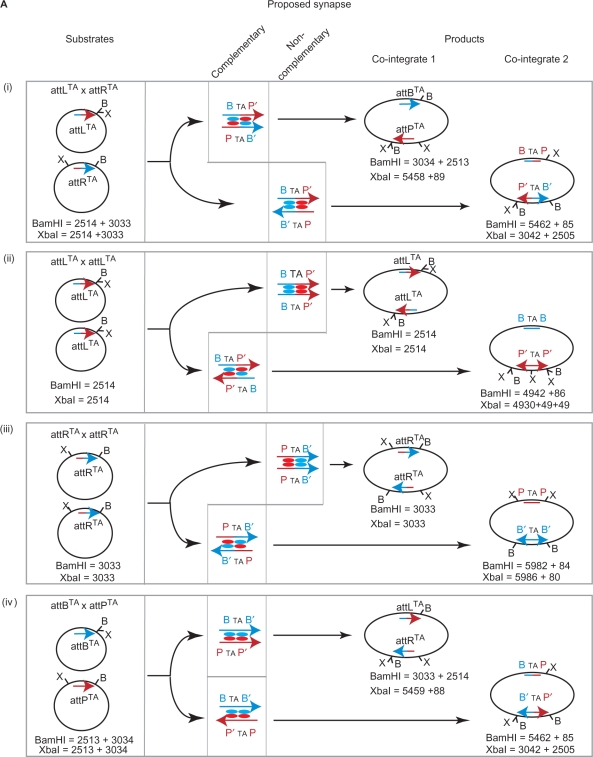Figure 5.
Structural bias in the formation of the Int E449K synaptic complexes with attL and attR sites. (A) Recombination products from plasmids encoding attLTA (pMS92), attRTA (pMS93), attBTA (pRT603) and attPTA (pRT701). Products (co-integrates 1 and 2) are derived from reactions between (i) pMS92 (attLTA) and pMS93 (attRTA) (ii) pMS92 and pMS92 (iii) pMS93 and pMS93 and (iv) pRT603 (attBTA) and pRT701 (attPTA). Each attachment site is represented as an arrow. The halves without the arrow heads are the B or P arms, the halves with the arrowheads are the B′ or P′ arms. B-type arms are blue and P-type arms are red. The structures of the proposed synaptic complexes are indicated by the alternative alignments of P or P′ and B or B′ arms. The putative synaptic tetramer of integrase subunits is shown with each subunit coloured according to whether it is interacting with a B-type arm (blue) or a P-type (red). Int interactions at the synaptic interface are either complementary (Int bound to P-type arms interact with Int bound to B-type arms) or non-complementary (Int subunits that are both bound to P-type or B-type arms). The positions of relevant restriction sites are indicated (B, BamHI; X, XbaI) and the expected restriction fragment sizes of the parental plasmids and the co-integrate products are shown.

